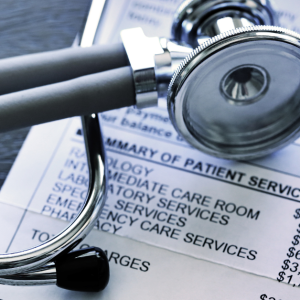One of the more prominent issues in healthcare today revolves around the concept of transparency – transparency in patient costs, in quality of care, and in payer/provider negotiations. But there is another area of healthcare where transparency is critical: in the effort to achieve revenue integrity.
Revenue integrity – getting paid for everything you do and keeping it – has become an important concept for healthcare organizations struggling to maintain healthy top and bottom lines. Achieving revenue integrity, however, is easier said than done and relies heavily on transparency across the entire enterprise.
Data Transparency
Achieving revenue integrity requires being able to mine the organization’s billing and remit data to identify compliance and revenue risks. Organizations must gain visibility to this data that is typically housed in disparate systems across the enterprise so they can harness the analytics that will reveal important insights.
Leveraging key metrics focused on current risk areas allows organizations to monitor provider billing patterns and identify anomalies. This helps uncover threats to revenue integrity and can provide true insight into billing compliance and financial risks. Armed with this information, organizations can then focus efforts on root cause analysis which leads to implementation of appropriate corrective action activities.
Discoveries made through data analysis also allows organizations to develop educational and training opportunities that eliminate problems at the source, thus treating the “disease” instead of just the “symptoms.”
Operational Transparency
Traditionally, the various departments in a healthcare organization – patient engagement, clinical documentation, coding, billing and collections, and compliance – have operated independently, with little interaction with other groups in the revenue cycle. This disjointed approach leads to process gaps which can result in significant revenue leaks and non-compliance exposure.
To achieve true revenue integrity, organizations must have a transparent, single-lens view of the entire operation – front to back – to ensure ongoing collaboration. This requires breaking down silos and changing the way each group operates to ensure a connected workflow.
Operational transparency is also necessary to ensure that the process as a whole is performing efficiently. Not only does this holistic view help achieve revenue integrity, it also ensures that staff is being deployed in the most effective way. Streamlining processes and workflows can often free up staff to be repurposed to more value-added tasks within the organization.
A recent survey revealed that nearly three out of four healthcare executives considered benchmarking important or extremely important to identify and prioritize improvement opportunities. They also identified performance against benchmarks as the third most important factor in influencing which improvement initiatives to launch.[1]
Peer Transparency
The days of organizations keeping everything “close to the vest” are rapidly coming to a close. Although some forms of benchmarking in the healthcare industry have been around for decades, organizational leaders are focusing more extensively on comparisons with like institutions as a way to drive improvement and focus on risk areas.
A recent survey revealed that nearly three out of four healthcare executives considered benchmarking important or extremely important to identify and prioritize improvement opportunities. They also identified performance against benchmarks as the third most important factor in influencing which improvement initiatives to launch.[1]
Benchmarking is also beneficial when it comes to identifying best practices. Implementing practices that have been successful in other organizations can be beneficial in many areas of healthcare, including clinical care and patient satisfaction. Incorporating best practices in coding, clinical documentation, and billing and collection can also be instrumental in achieving revenue integrity.
Some healthcare technology vendors have established peer-based customer communities to help facilitate information sharing. These communities give members an opportunity to access and compare risk management techniques and compliance best practices, while comparing performance against real-world data from peer organizations. This helps organizations better understand the efficacy of their processes and identify potential risk areas for further analysis.
Closed-off silos and a lack of visibility to both internal and external data can be significant barriers to achieving high levels of revenue integrity. Only when organizations have full visibility to as much information as possible, and are able to analyze that information to uncover critical insights, can they make the necessary changes to achieve success in their revenue integrity efforts.
[1] Benchmarking in Healthcare Survey, Survey of US Healthcare Executives by Health Catalyst, January 2018
To learn how to implement a unified revenue integrity initiative at your organization, please download our white paper: An Unexpected Marriage: Tying the Knot Between Compliance and Revenue Cycle to Ensure Revenue Integrity.








